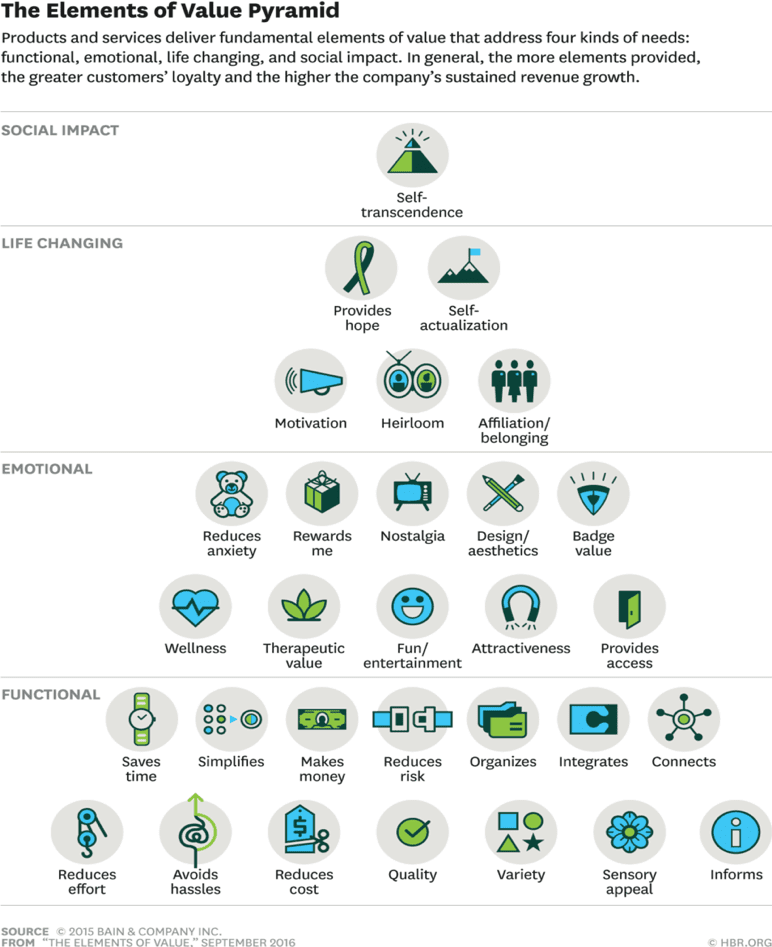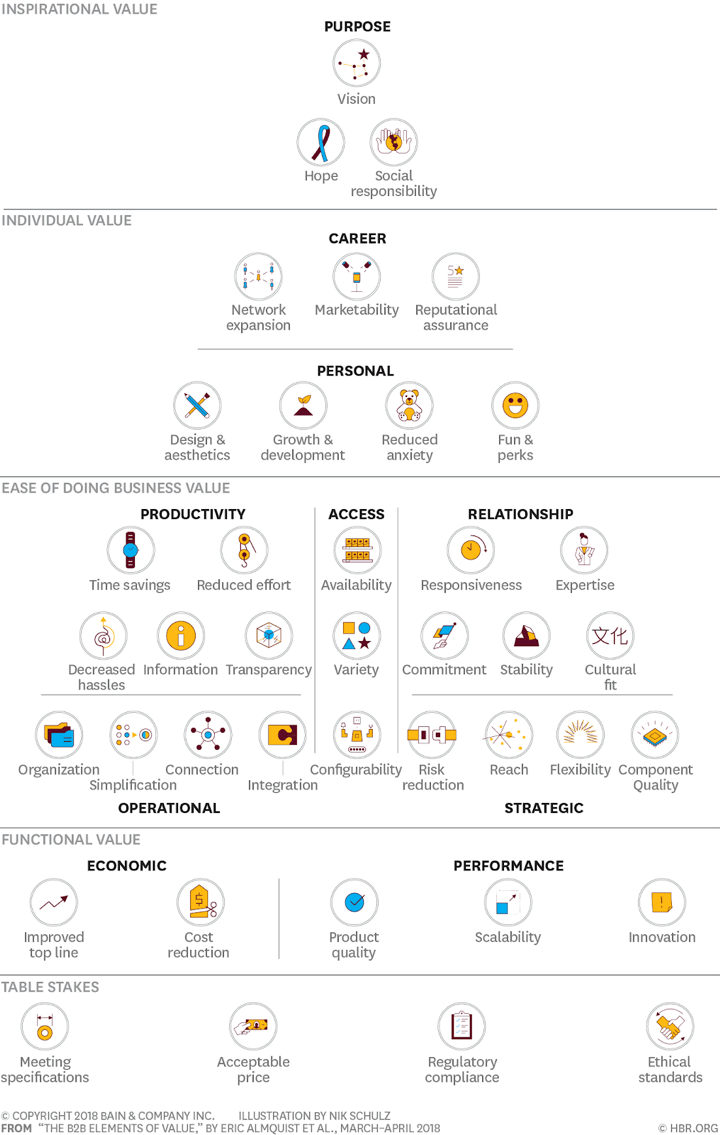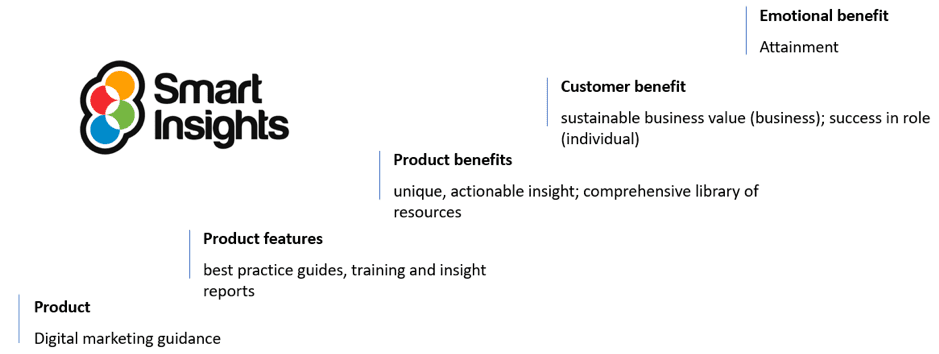Three tools and frameworks to shape your brand’s positioning
Defining your business or brand’s value proposition is one of the most important tasks you will undertake as a marketer. A clear, differentiated value proposition is what will enable you to communicate to prospects and customers the overall benefits you have to offer and why you are better option when compared with your competitors.
The value proposition is an articulation of the overall position your brand occupies in the marketplace from your customers’ point-of-view. Although you will always start with an internal view of how you want to be perceived, the customer will ultimately make a final decision. I’d therefore like to look at three practical frameworks that can be used to develop a brand proposition that will keep the customer front and centre.
1. Start with ‘Why’
Now regarded by many within the marketing community as a modern classic, Simon Sinek’s ‘Golden Circle’ is a very effective tool for getting to the heart of what your brand is really about. I’ve experienced first-hand the passionate debate and discussion this framework can trigger and for good reason: really getting under the skin of your brand’s meaning and defining why you do what you do is not easy.
Dave Chaffey outlined in an earlier post how the ‘Golden Circle’ can be used to explore the ways in which a brand can stand out from the competition by communicating its differences. However, the ‘Golden Circle’ can prove even more effective when you take the opportunity to interrogate your initial internal perspective by combining with direct feedback from customers. If your ‘why’ is fuzzy, vague or meaningless, your customers will let you know! You can use this insight to refine your ‘why’ and overall proposition accordingly.
It’s no surprise that some of the world’s biggest and most successful brands have a clear grasp of why they do what they do, including Nike, Disney and, of course Apple, most famously demonstrated in their 1997 ad ‘Here’s to the crazy ones’:
2. The Elements of Value
What customers value in a product or service can often be hard to define as both emotional (e.g. wellness or nostalgia) and functional (e.g. reducing cost or making money) benefits are sometimes given equal importance by the customer.
In 2016 the consultancy firm Bain & Company came up with 30 Elements of Value that meet four kinds of need: functional, emotional, life-changing and social impact. When combined in the right way, they can increase customer loyalty and revenue:

The authors of the ‘Elements of Value’ explain that what consumers truly value is psychologically complicated however some universal building blocks of value exist. Whilst some brands may want to keep things simple and focus on just one or two functional values, to really stand out in an increasingly competitive landscape brands must also consider emotional and social factors that their target audience may value.
The ‘Elements of Value’ gives brands the opportunity to test different combinations of values and evaluate consumers’ reactions. The framework can provide a helpful way of examining what genuinely resonates with customers and the boundaries that may exist for some brands. For example, Microsoft are very strong for functional needs including organizing, connecting and quality, but may struggle to match the emotional and life-changing needs, e.g. motivation and affiliation/ belonging, of brands such as Apple, Tesla or AirBnB.
It’s interesting to note that earlier in 2018 Bain & Company released 40 Elements of Value for B2B buyers that helps marketers understand the ‘hierarchy of value’ – the values that have the biggest impact on decision-making:

The authors note that whilst elements at the bottom of the pyramid are important, they’re also the most objective and essentially ‘table stakes’. Brands that are able to connect functional concerns to the more subjective and emotional values (such as making life easier and personal/ career gains) will be able to influence decision-making more effectively.
3. The Benefits ladder
The Benefits Ladder may be simple but it’s still a very effective tool for summarising how the basic product-level benefits and features of a brand ladder up to and align with the emotional benefits. By starting with the product and working your way up you can begin to piece all the different parts together, ensuring that they align and most importantly match the values from the customer’s point of view:
Product – the product or service being sold
Product features – the quality, details or function
Product benefits – the implicit or explicit claims of superiority
Customer benefit – the product benefit’s reward. How does it make the customer feel? What does it enable them to do?
Emotional benefit – the emotional feeling that binds the brand and target audience via shared values and beliefs
Smart Insights’ benefits ladder might look something like this:

You’ll notice that whilst the unique quality and range of Smart Insights’ content is important, the overall proposition is far more powerful when the customer believes they are being supported in their ambitions to become an authoritative, successful marketer. This emotional benefit enables Smart Insights to stand out and be perceived as a partner for both individuals and businesses in their quest for marketing excellence.
Conclusion
There are a wide range of tools, techniques and frameworks available for creating a brand value proposition but it’s always worth taking a customer-centric view from the very outset. Some frameworks, such as the ‘Golden Circle’, need to be adapted to build in the customers’ point-of-view whilst the others, such as the ‘Elements of Value’, have already been developed with the customer in mind. Use of a combination of tools and remember to test and refine iteratively over time.
Establishing a clear value proposition may not be considered as fun as high-level strategy or execution but without a differentiated position in the marketplace it will be difficult to effectively communicate the overall features and benefits you have to offer versus competitors to prospects and customers.
